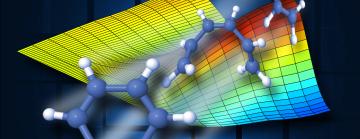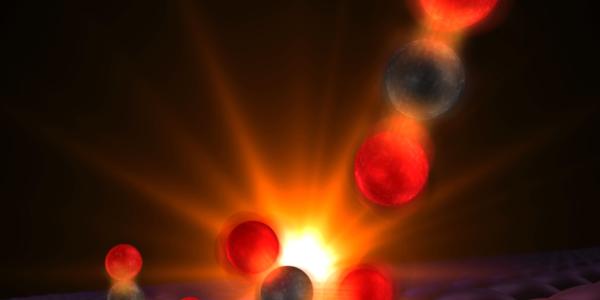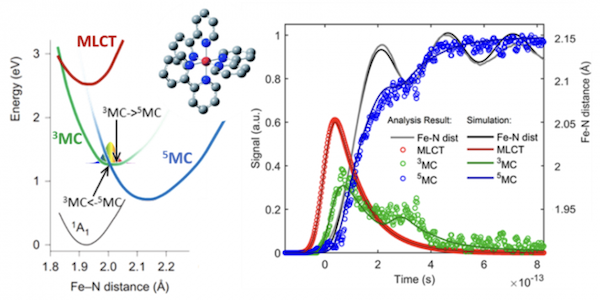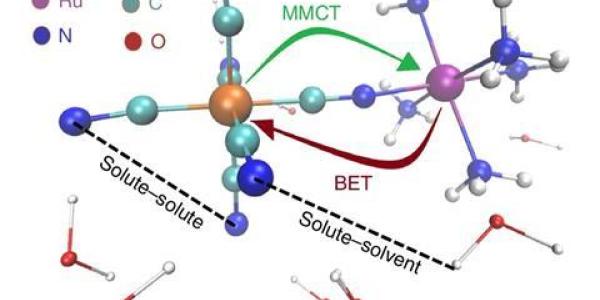
This illustration shows shape changes that occur in quadrillionths-of-a-second intervals in a ring-shaped molecule that was broken open by light. The molecular motion was measured using SLAC's Linac Coherent Light Source X-ray laser. The colored chart shows a theoretical model of molecular changes that syncs well with the actual results. The squares in the background represent panels in an LCLS X-ray detector.
SLAC National Accelerator Laboratory
Explore Chemistry at LCLS
LCLS is a Department of Energy funded user facility at SLAC National Accelerator Laboratory managed by Stanford University. The chemistry-related research here is supported and performed by the Chemical Sciences Department.
Learn more about the department's research activities, & publications on the LCLS website
Science Impact
Probing Catalytic Reactions in Real Time
Thermally-driven chemistry is mediated by the transition state that separates reactants from products, and determines reaction pathways. Understanding the chemical structure of ephemeral transition states is a grand challenge in chemistry.




